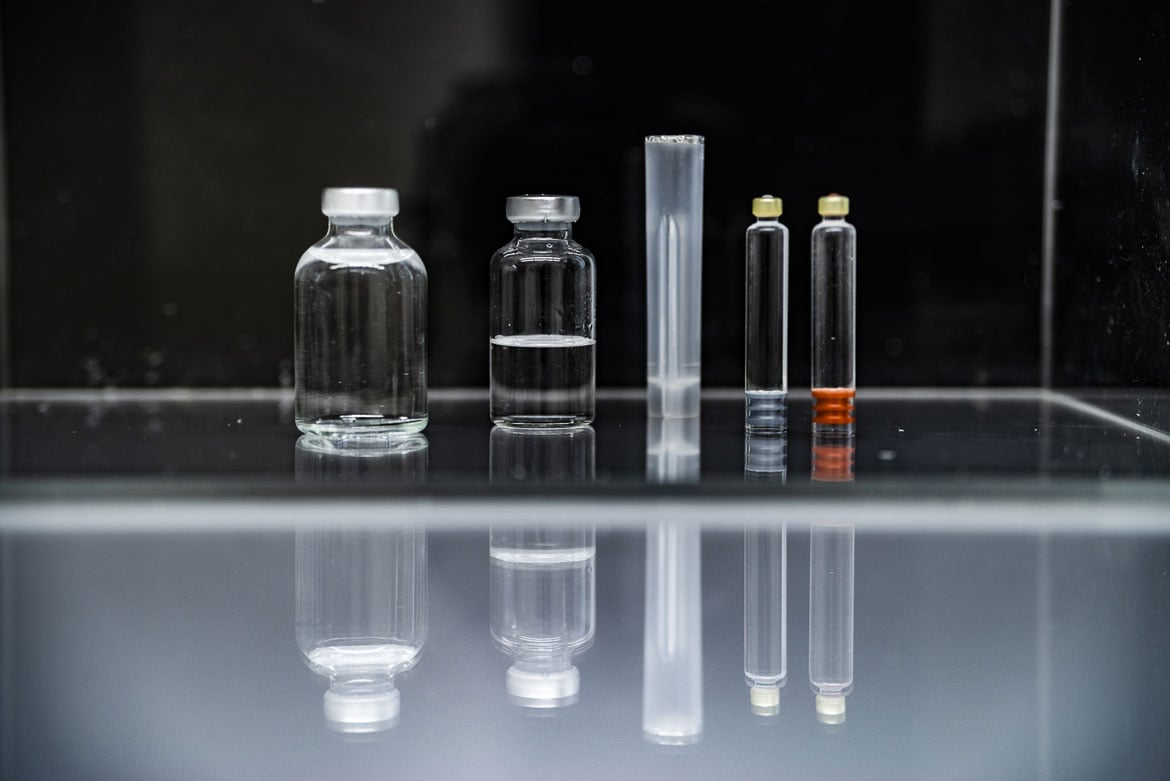Headspace gas analysis is a technique that measures the quantity of certain gases in the so-called “headspace” of a hermetically sealed package, i.e., in the space inside the packaging not occupied by the product, whether it be a food, a drug or a cosmetic.
This type of analysis is particularly useful for examining the proper seal of the packaging while verifying that the product is preserved without undergoing alterations. That is why it is a fundamental check for the packaging and pharmaceutical industries.
Engineer Davide Formenti, R&D manager of Bonfiglioli Engineering, explains the characteristics of the technology for HGA developed by the company, highlighting the advantages of using this methodology of inspection, with a special focus on the pharmaceutical sector.
How HGA works
Headspace Gas Analysis is based on the analysis of the laser light absorption by the gas molecules inside the container to be inspected.
The basic principle is laser absorption spectroscopy (TDLAS), which uses laser diodes tuned over the frequency of the particular molecule to be analysed: absorption is measured after tuning over the frequency of oxygen, carbon dioxide or water vapour, thus determining the quantity of the molecule present in the packaging.
The process can be further improved by combining additional technologies acting on the wavelength (WMS) or frequency (FMS) with TDLAS. Bonfiglioli Engineering’s machines use WMS, with lower frequencies that enable the use of less technologically complex systems.

Bonfiglioli Engineering machines for HGA
The technology used for Headspace Gas Analysis is particularly accurate and effective in identifying the quantity of certain molecules inside hermetically sealed containers, especially when certain measures from the optical set-up point of view are taken to minimize signal noise (due to the Etalon effect), like acting on the inclination of the laser beam striking the sample being analysed, for example.
This technology is integrated in its machines - developed in collaboration with university research - allowing its application in industry. Bonfiglioli Engineering's research objective was to work on both sensor and control system dimensions and sensitivity in order to be able to implement this technology in an automation system and allow customer companies to benefit from a laser system capable of processing their entire production.
Today, the company provides:
- Control systems integrated directly in production lines
- Automatic control systems working off line
- Small laboratory instruments that perform analysis under the control of an operator
- Combined machines in which the laser system is integrated with other inspection methodologies allowing significant space savings
The choice of the type of technology to be applied in different production contexts is based on various parameters, in particular on the availability of space, the availability of staff to perform necessary controls, the costs that the company is willing to bear and its specific requirements.

The advantages of using HGA in the pharmaceutical industry
HGA technology is recognised by the United States Pharmacopoeia (USP <1207>) as a methodology for the quality control of pharmaceutical products. This recognition certifies the advantages offered by this method, which is integrated with previous control systems, traditionally based on checking pressure variations inside packaging.
HGA is particularly useful for quality control in the pharmaceutical sector because products are very sensitive to moisture or oxygen in this field. This is why it is essential to implement control systems that verify which and how many gases are present in the pharmaceutical packaging, to ensure quantities do not exceed the standard limit and to take prompt action if anomalies are found.
HGA is a successful procedure because it is based on a non-destructive method, meaning it can be applied to the entire production. Other control methods require the drugs to be extracted from the production line and analysed off line, leading to the destruction of the samples analysed. In this way, if an abnormality is detected in the sample control, the entire production lot that has been potentially compromised must be eliminated. HGA, on the other hand, does not require laboratory technologies, so it can be applied on line to analyse the entire production.
Moreover, this methodology not only makes it possible to identify all products that do not meet expected quality criteria, but could also be used to identify the stage in the process at which any errors occur (identifying, for example, if the excessive amount of oxygen in the package is due to insufficient nitrogen flow when the package was closed, or to the early closure of the package which prevented the creation of the internal vacuum). Therefore, not only does HGA guarantee that 100% of the production complies with standards, but also improves the production process as a whole, identifying problems and malfunctions in a timely manner and avoiding waste.


